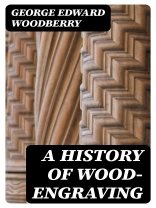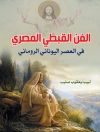George Edward Woodberry’s ‘A History of Wood-Engraving’ stands as a seminal exploration into the intricate and often overlooked art form of wood-engraving. Through a meticulously detailed narrative, Woodberry combines historical analysis with artistic critique, tracing the evolution of wood-engraving from its origins to its role in modern printmaking. His literary style is characterized by a rich, descriptive prose that captures the technical and aesthetic dimensions of the art form, reinforcing its significance in the broader narrative of artistic expression during various historical periods. The book is keenly aware of its literary context, engaging with contemporary discussions around print culture and the intersection of art and commerce. Woodberry, a noted American poet, critic, and intellectual of the late 19th century, possessed a unique perspective shaped by his academic pursuits and artistic inclinations. His deep appreciation for the visual arts and commitment to preserving cultural heritage presumably motivated him to document the history of wood-engraving, offering a bridge between the artistic community and the public. Woodberry’s extensive knowledge and passion for craftsmanship are evident, as he endeavors to illuminate the narratives behind the engravings themselves, showcasing their cultural implications. This book is highly recommended for art historians, printmakers, and anyone fascinated by the processes that shape visual culture. Woodberry’s insightful analysis not only revives interest in a pivotal technique within the art world but also encourages readers to reflect on the enduring impact of wood-engraving in contemporary visual storytelling. A must-read for those seeking to understand the interplay between art, history, and technology.
关于作者
George Edward Woodberry (1855–1930) stands as a notable figure in American literary scholarship and criticism during the late 19th and early 20th centuries. A respected academic and poet, his scholarly work often reflected a deep appreciation for the aesthetic and historical importance of literature and the arts. He served as a professor of literature at Columbia University, where he was revered for his erudition and eloquent lectures. Among his versatile contributions to literary criticism, perhaps none captures his interdisciplinary approach as well as ‘A History of Wood-Engraving’. This work showcases his interest in not just literary texts but also the evolution of illustration and the intricate craft of wood-engraving. Within the covers of this detailed study, readers discover Woodberry’s ability to weave a narrative that is both authoritative in its scholarship and expressive in its prose. His oeuvre crosses the boundaries of literary genres, incorporating poetry, criticism, and history, and is characterized by its scholarly rigour and a lyrical quality reflective of his poetic sensibilities. Woodberry’s legacy includes not only his influential writings but also his mentorship of future literary scholars and his contribution to the elevation of American literary criticism during his lifetime.












